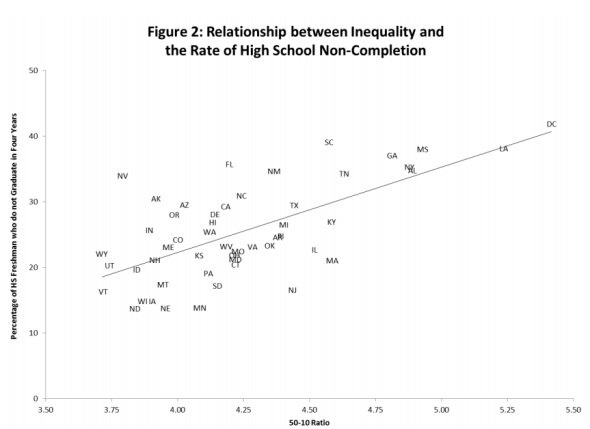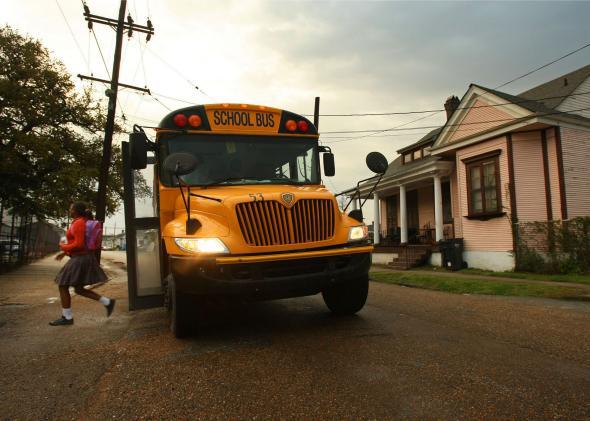A couple of years ago, economists Melissa Kearney and Phillip Levine came up with a simple and striking explanation of teen pregnancy they called the “economic despair” theory. Unmarried girls from poor families, they found, were more likely to give birth in states with large income gaps between the poorest households and the middle class—what researchers call “lower-tail” inequality. Combined with other evidence, such as ethnographic research, this pattern led them to conclude that many young women simply choose to have children early once they feel their career prospects are dim. They look at the economic ladder and decide the climb is impossible. So they look for personal fulfillment through a baby instead.
Today, Kearney and Levine are out with a new working paper that shows how the “despair theory” might apply to young men. This time, the issue is high school graduation. It finds that boys from low-socioeconomic-status families are more likely to drop out in states with larger gaps between the poor and the middle class, as shown on the far left of the graph below. That trend holds even once they control for things that might influence completion, such as racial segregation or public investment in schools.

On the whole, state graduation rates seem to fall as lower-tail inequality rises. Similarly, states with worse income mobility also had lower graduation rates among the poor.

Like teen girls who give birth, Kearney and Levine suggest that when boys see middle-class life as a distant possibility, they become discouraged and give up on school. While a little bit of inequality might motivate some students to study harder, a lot of it might kill their motivation entirely. Or, as the researchers put it a bit more technically, “a greater gap between the bottom and the middle of the income distribution might lead to a heightened sense of economic marginalization such that an adolescent at the bottom of the income distribution does not see much value in investing in his/her human capital.”
Kearney and Levine aren’t offering definitive proof that “economic despair” is driving down graduation rates, nor do they claim to. Rather, they’re offering a compelling explanation for a phenomenon that doesn’t seem to be accounted for especially well by other data, and one that fits pretty well with common sense.
In general, there are two reasons why this study is intriguing. First, social scientists are only beginning to grapple with the ways that inequality shapes countries economically and socially. Since education is often offered up as a potential solution to the income gap, it should be of some concern that graduation could be one of the income gap’s first victims.
Beyond that, Kearney and Levine raise a bigger point about the way we conceive of the income gap. Much of the inequality debate has focused on the growing divide between the rich and the rest, because that’s been the major development of the past 30 years. By comparison, the gulf between the poor and middle has basically been stable—yet it’s that gap that might have some of the most malign effects on society. When we talk about if and how inequality is bad for the country, we have to remember which type of inequality we’re talking about.
